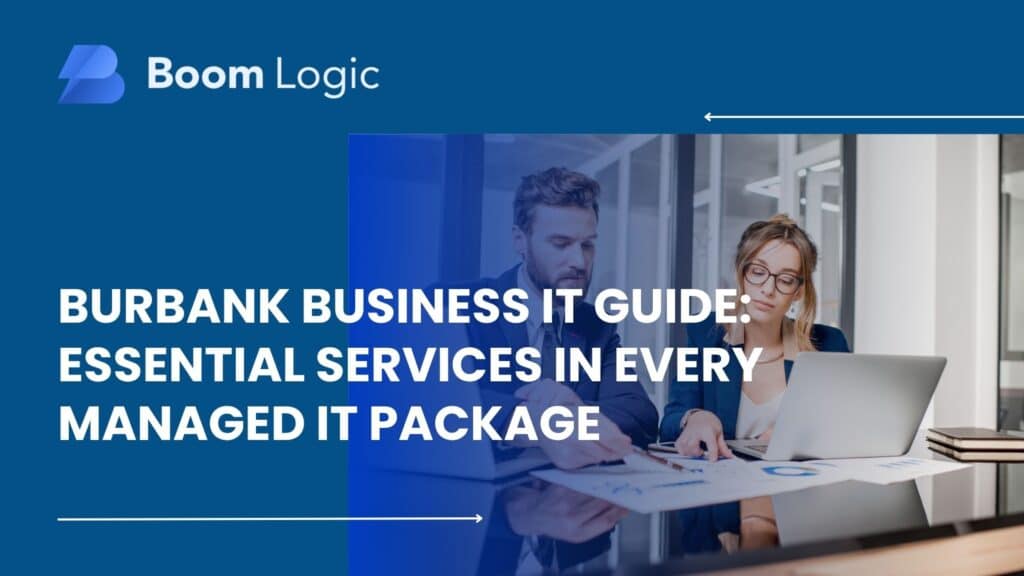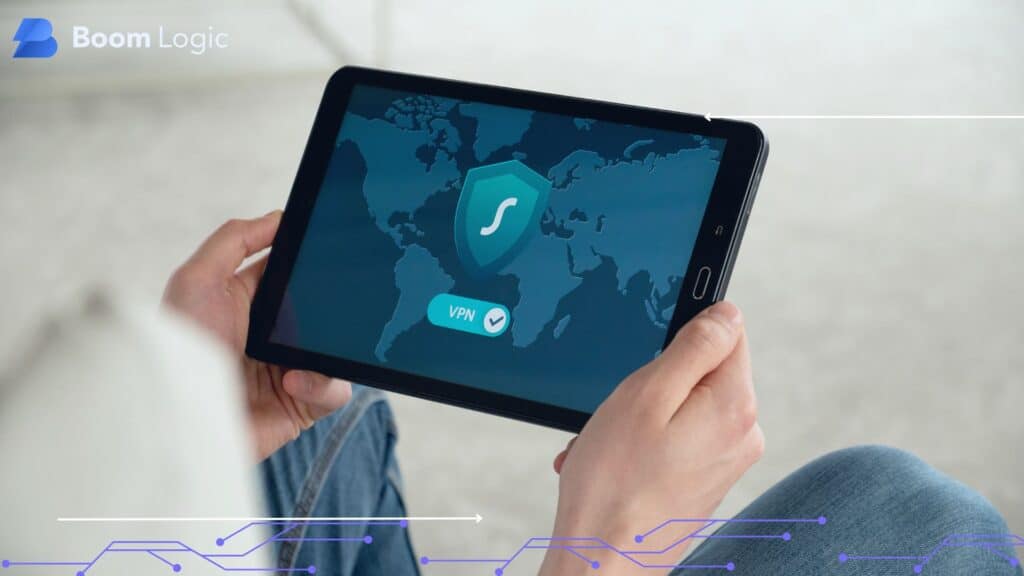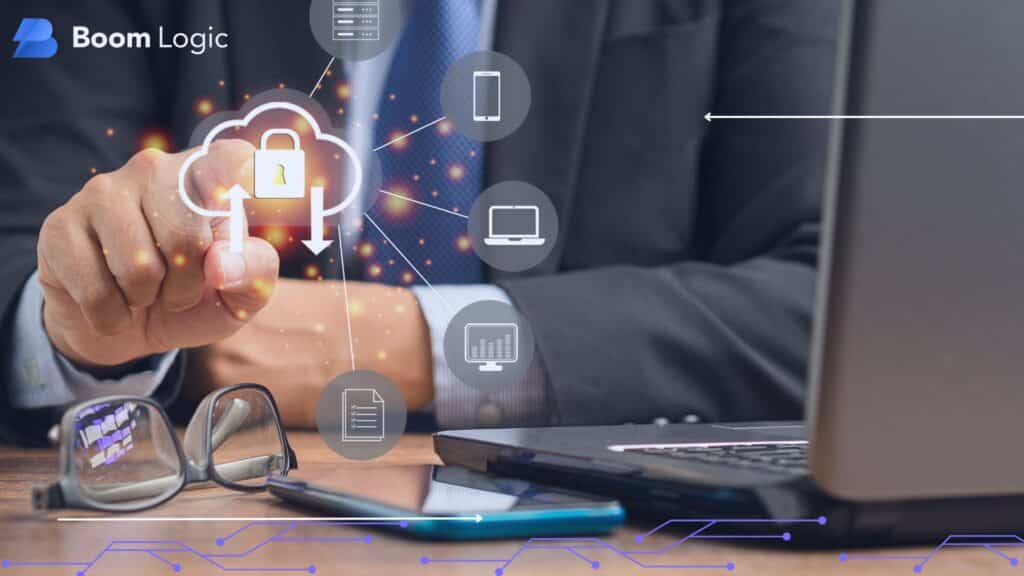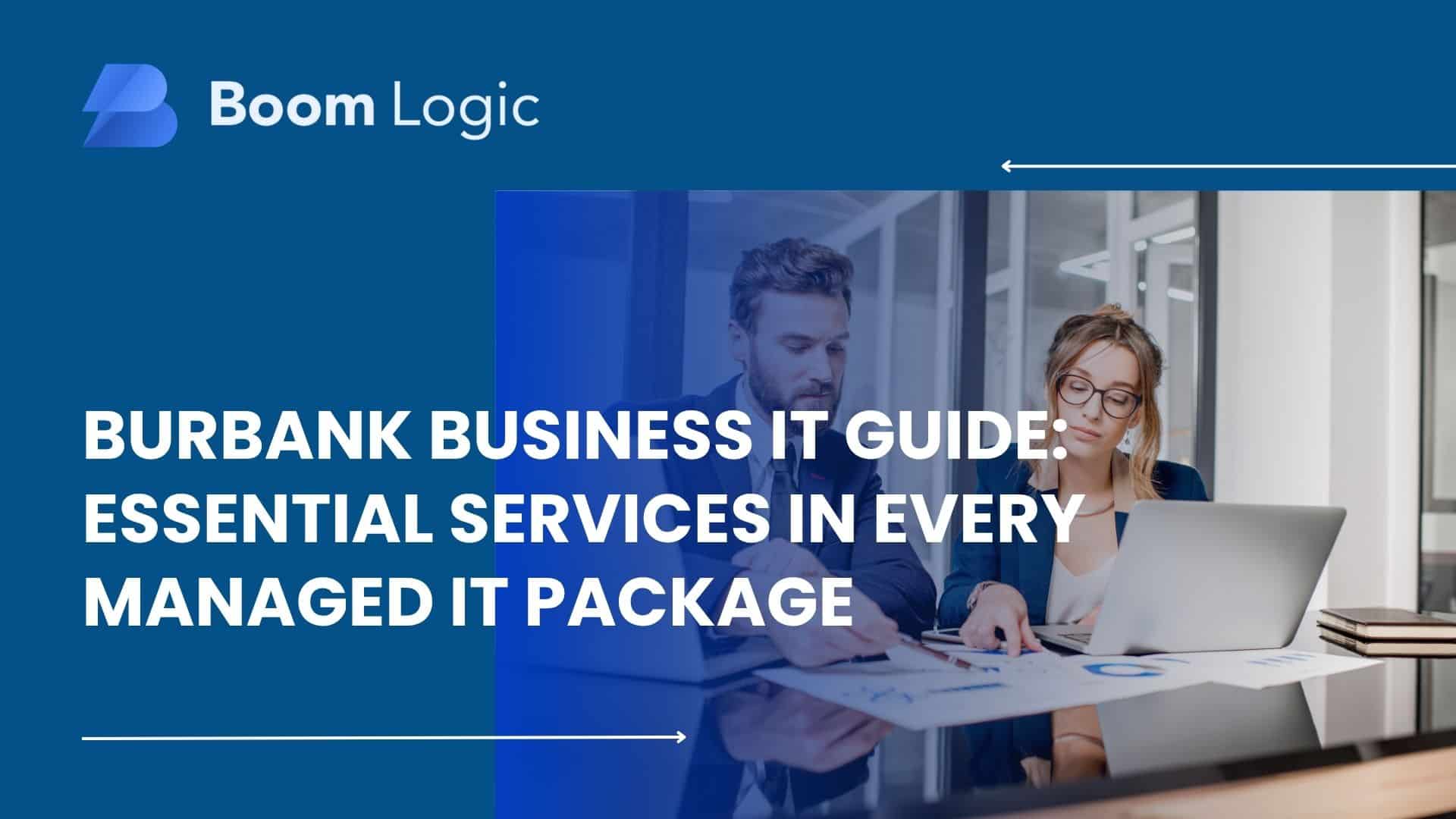
Running a business in Burbank means juggling countless responsibilities, and IT management shouldn’t consume your valuable time. You need reliable technology systems that work seamlessly in the background while you focus on growing your company. Managed IT services provide comprehensive technology support that keeps your operations running smoothly without requiring you to maintain an in-house IT department.
Understanding what’s included in a managed IT package helps you make informed decisions about your technology infrastructure. From cybersecurity protection to data backup solutions, these services cover the essential technology needs that modern Burbank businesses face daily. We’ll walk you through the core components of managed IT services and explain how each element protects and enhances your business operations.
Key Takeaways
- Managed IT services bundle multiple technology solutions including help desk support, network monitoring, cybersecurity, and data backup into one comprehensive package
- Proactive maintenance prevents costly downtime by identifying and resolving potential issues before they disrupt your business operations
- Scalable solutions grow with your business without requiring significant capital investments in hardware or additional IT staff
- Comprehensive cybersecurity protection safeguards your business data from increasingly sophisticated cyber threats targeting California businesses
- Predictable monthly costs replace unexpected IT expenses making technology budgeting more manageable for Burbank companies
- Expert support available when you need it ensures your team stays productive without waiting for external consultants
Overview
Managed IT services transform how Burbank businesses handle their technology needs by providing ongoing support, monitoring, and maintenance through a single partnership. Rather than reacting to problems as they occur, managed services take a preventative approach that reduces disruptions and maximizes your technology investment.
Throughout this guide, you’ll discover the specific services included in comprehensive managed IT packages—from round-the-clock network monitoring to advanced cybersecurity protection. We’ll address common questions about response times, cost structures, and how these services integrate with your existing systems. You’ll also learn how managed IT providers handle everything from software updates to disaster recovery planning.
Whether you’re considering your first managed IT partnership or evaluating your current provider, this comprehensive resource helps you understand exactly what services you should expect and how they benefit your Burbank business operations.
Understanding the Core Components of Managed IT Services
Managed IT services encompass a wide range of technology solutions designed to keep your business systems running efficiently. The foundation starts with continuous monitoring of your network infrastructure, which identifies potential problems before they escalate into costly outages. This proactive approach differs significantly from traditional break-fix IT support where technicians only respond after something breaks.
Network monitoring and management forms the backbone of any managed IT package. Your provider tracks server performance, bandwidth utilization, and security threats in real-time, allowing them to address issues immediately. This constant vigilance ensures your employees maintain productivity without experiencing frustrating technology disruptions during critical business hours.
Help desk support provides your team with immediate assistance for technology questions and problems. When employees encounter software glitches, password issues, or hardware malfunctions, they contact a dedicated support team that resolves problems quickly. Most managed IT providers offer outsourced IT helpdesk services with multiple support tiers to handle everything from basic questions to complex technical challenges.
Beyond basic monitoring and support, managed services include regular system maintenance that keeps your technology infrastructure healthy. This includes applying security patches, updating software, and optimizing system performance to prevent degradation over time.
Cybersecurity Protection and Threat Management

Cybersecurity represents one of the most critical components of modern managed IT services, especially as cyber threats continue evolving in sophistication. Your managed IT provider implements multiple layers of security protection to safeguard your business data, customer information, and operational systems from malicious actors.
Firewall management and intrusion detection create the first line of defense against external threats. Your provider configures and maintains enterprise-grade firewalls that filter incoming and outgoing network traffic, blocking suspicious activity before it reaches your systems. Advanced intrusion detection systems alert your IT team to potential breaches in real-time.
Antivirus and anti-malware protection extends across all endpoints in your network, including desktops, laptops, and mobile devices. Managed IT providers ensure these security tools stay current with the latest threat definitions, automatically updating to protect against newly discovered vulnerabilities. This comprehensive approach prevents ransomware attacks, viruses, and other malicious software from compromising your business operations.
Security awareness training helps your employees recognize phishing attempts, social engineering tactics, and other common attack vectors. Many managed IT packages include regular training sessions that teach your team how to identify suspicious emails, avoid risky websites, and follow security best practices. Human error remains a leading cause of security breaches, making employee education essential.
Vulnerability assessments and penetration testing identify weaknesses in your security posture before cybercriminals exploit them. Your IT provider conducts regular security audits that test your defenses and recommend improvements to strengthen protection.
For businesses requiring comprehensive protection, enterprise cybersecurity solutions provide advanced threat intelligence, security operations center monitoring, and incident response capabilities. These services give Burbank businesses access to security expertise that would be prohibitively expensive to maintain in-house.
Data Backup and Disaster Recovery Solutions
Data loss can devastate any business, whether caused by hardware failure, cyberattacks, natural disasters, or human error. Managed IT services include comprehensive backup disaster recovery solutions that protect your critical business information and ensure rapid recovery when unexpected events occur.
Automated backup systems capture your business data continuously throughout the day, eliminating the risk of losing significant work between manual backup intervals. Your managed IT provider configures backup schedules that balance data protection with system performance, ensuring backups occur without disrupting your business operations. These systems typically maintain multiple backup versions, allowing you to restore data from specific points in time if needed.
Offsite and cloud-based storage protects your backup data from localized disasters that might damage your primary business location. Rather than relying solely on local backup devices vulnerable to the same threats as your primary systems, managed IT services replicate your data to secure remote locations. This geographic separation ensures your business can recover even if your Burbank office experiences fire, flooding, or other catastrophic events.
Disaster recovery planning extends beyond simple data backup to encompass your entire technology infrastructure. Your provider develops detailed recovery plans that prioritize critical systems and establish clear procedures for restoring operations after disruptions. These plans define recovery time objectives and recovery point objectives that align with your business requirements.
Regular backup testing confirms your recovery systems work correctly before you actually need them. Managed IT providers conduct periodic restoration tests that verify backup integrity and measure recovery speeds. This proactive testing identifies potential problems while you still have time to address them, rather than discovering backup failures during actual emergencies.
The backup and disaster recovery services included in managed IT packages give you peace of mind knowing your business can survive and recover from technology disasters quickly.
Cloud Services and Infrastructure Management

Cloud computing has transformed how businesses manage their technology infrastructure, and managed IT services include comprehensive cloud support that helps you leverage these powerful platforms effectively. Whether you’re migrating existing systems to the cloud or managing hybrid environments that combine local and cloud resources, your managed IT provider ensures smooth operations across all platforms.
Cloud migration services help you transition applications, data, and workloads to cloud platforms like Microsoft Azure, AWS, or Google Cloud. Your provider assesses your current infrastructure, recommends appropriate cloud solutions, and manages the technical migration process. This expertise prevents common migration pitfalls that can disrupt business operations or compromise data security.
Managed cloud server hosting provides your business with scalable computing resources without requiring significant capital investments in physical hardware. Your IT provider provisions virtual servers, configures security settings, and maintains optimal performance as your needs evolve. This flexibility allows you to scale resources up during busy periods and reduce capacity during slower times, optimizing your technology spending.
Cloud backup and redundancy leverage the geographic distribution of cloud data centers to protect your information. Your managed IT provider implements multi-region backup strategies that ensure your data remains accessible even if an entire data center experiences outages. This level of redundancy would be extremely expensive to replicate with traditional on-premises infrastructure.
Application hosting and management enables your business to run software in the cloud rather than installing applications on individual computers. Your provider handles software updates, security patches, and performance optimization, ensuring your team always works with current versions. This approach simplifies software management and reduces the burden on your local network infrastructure.
For businesses requiring robust cloud infrastructure, managed cloud server hosting services provide enterprise-grade reliability and performance without enterprise-level complexity.
Network Infrastructure and Connectivity Management
Your network infrastructure connects all technology components within your business, and managed IT services ensure these connections remain fast, reliable, and secure. From your internet connection to internal network switches and wireless access points, comprehensive network management keeps information flowing smoothly throughout your organization.
Network design and optimization establishes the foundation for efficient technology operations. Your managed IT provider assesses your business requirements, designs network architectures that support your workflows, and implements solutions that balance performance with budget constraints. This strategic approach prevents network bottlenecks that slow productivity and frustrate employees.
Bandwidth monitoring and management ensures critical applications receive priority when network congestion occurs. Your provider implements quality of service policies that allocate network resources intelligently, preventing bandwidth-intensive activities from disrupting essential business functions. This becomes particularly important as businesses adopt cloud-based applications, video conferencing, and other high-bandwidth services.
Wireless network management extends reliable connectivity throughout your business premises. Managed IT providers design wireless networks that provide consistent coverage, implement security protocols that protect against unauthorized access, and manage access points that adapt to changing usage patterns. Proper wireless design eliminates dead zones and maintains performance even as employee device counts increase.
VPN and remote access solutions enable secure connections for remote workers and mobile employees. Your managed IT provider configures virtual private networks that encrypt data transmitted over public internet connections, protecting sensitive business information from interception. These solutions have become essential as more businesses adopt hybrid work models that combine office and remote work.
For comprehensive network solutions, networking-as-a-service packages provide enterprise-grade network infrastructure without requiring extensive in-house expertise or capital investments in networking equipment.
Software Management and Licensing Administration
Software represents a significant technology investment for most businesses, and managed IT services include comprehensive software management that ensures you maintain compliance, optimize spending, and keep applications current. From operating systems to specialized business applications, your managed IT provider handles the complex details of software administration.
Software licensing management tracks all software licenses across your organization, ensuring you maintain compliance with vendor agreements. Your provider monitors license counts, identifies unused licenses that can be reassigned, and alerts you to upcoming renewals. This centralized management prevents compliance violations that could result in penalties while eliminating wasteful spending on unnecessary licenses.
Patch management and updates keep your software current with the latest security fixes and feature improvements. Your managed IT provider tests updates before deployment, schedules installations during off-hours to minimize disruption, and verifies that updates don’t conflict with your business applications. This systematic approach prevents the security vulnerabilities that emerge when software remains outdated while avoiding the disruptions that can occur from hasty updates.
Application performance monitoring identifies software problems before they impact your business operations. Your provider tracks application response times, error rates, and resource consumption, addressing performance degradation proactively. This monitoring extends to both cloud-based and locally installed applications, providing comprehensive visibility across your entire software environment.
Software deployment and configuration ensures new applications integrate smoothly with your existing technology infrastructure. When you adopt new software, your managed IT provider handles installation, configures security settings, integrates with other systems, and trains your team on proper usage. This expertise accelerates software adoption and prevents configuration errors that could compromise security or functionality.
Hardware Lifecycle Management and Maintenance
Technology hardware has finite lifespans, and managed IT services include strategic hardware management that helps you maximize your equipment investments while planning for timely replacements. Your provider monitors hardware health, recommends upgrades, and ensures smooth transitions when equipment reaches end-of-life.
Hardware inventory management maintains detailed records of all technology equipment within your organization. Your managed IT provider tracks purchase dates, warranty coverage, maintenance history, and performance metrics for servers, workstations, networking equipment, and peripheral devices. This comprehensive inventory enables informed decision-making about repairs, upgrades, and replacements.
Preventive maintenance and health monitoring extends hardware lifespan by identifying potential failures before they occur. Your provider monitors drive health, memory errors, thermal issues, and other indicators that predict imminent hardware problems. This proactive approach allows scheduled replacements during convenient times rather than emergency fixes when critical systems fail unexpectedly.
Vendor relationship management leverages your managed IT provider’s purchasing power and industry connections to secure favorable pricing on hardware purchases. Rather than navigating complex vendor relationships independently, you benefit from established partnerships that streamline procurement and ensure access to current equipment. Your provider also manages warranty claims and coordinates repairs with manufacturers when necessary.
Technology refresh planning helps you budget for hardware replacements by forecasting when equipment will require upgrading. Your managed IT provider evaluates your hardware inventory, identifies systems approaching end-of-life, and recommends replacement schedules that align with your budget cycles. This strategic planning prevents surprise expenses when critical hardware fails without warning.
Compliance Support and Documentation
Many Burbank businesses operate under regulatory requirements that mandate specific technology controls, and managed IT services include compliance support that helps you meet these obligations. From healthcare regulations to financial industry requirements, your provider ensures your technology systems satisfy applicable standards.
Compliance assessment and gap analysis identifies areas where your current technology practices fall short of regulatory requirements. Your managed IT provider reviews relevant compliance frameworks, assesses your existing controls, and develops remediation plans that address identified gaps. This systematic approach ensures you understand your compliance posture and have clear paths toward meeting all requirements.
Documentation and reporting provides the evidence required to demonstrate compliance during audits. Your provider maintains detailed records of security controls, access logs, system changes, and incident responses that auditors need to verify compliance. This comprehensive documentation reduces audit preparation time and helps you avoid findings that could result in penalties.
Security policy development establishes formal procedures that govern technology usage within your organization. Your managed IT provider helps you develop written policies covering data protection, acceptable use, incident response, and other security topics. These policies provide clear guidelines for employees while demonstrating your commitment to security best practices.
For businesses with specific compliance obligations, compliance-as-a-service packages provide specialized expertise in healthcare, financial services, and other regulated industries that demand rigorous technology controls.
Monitoring and Reporting Capabilities
Visibility into your technology environment enables informed decision-making, and managed IT services include comprehensive monitoring and reporting that keeps you informed about system health, security events, and technology performance. Your provider delivers insights that help you understand how technology supports your business objectives.
Real-time monitoring dashboards provide immediate visibility into critical system metrics. Your managed IT provider implements monitoring tools that track server uptime, network performance, security threats, and application availability. These dashboards alert your IT team to problems immediately while giving you confidence that technology systems operate normally.
Regular status reports summarize technology activities and highlight important trends. Your provider delivers monthly or quarterly reports that document resolved issues, security incidents, system improvements, and upcoming maintenance activities. These reports keep stakeholders informed about IT operations without requiring technical expertise to interpret raw monitoring data.
Performance analytics and trending identify patterns that inform strategic technology decisions. Your managed IT provider analyzes historical data to reveal capacity constraints, usage trends, and recurring problems that warrant attention. These insights guide hardware purchases, bandwidth upgrades, and other investments that improve technology performance.
Security incident reporting documents all security events detected within your environment. Your provider maintains detailed records of blocked threats, attempted intrusions, and policy violations that demonstrate the value of security investments while identifying areas requiring enhanced protection.
Strategic Technology Planning and Consulting
Beyond day-to-day technology management, managed IT services include strategic planning that aligns your technology investments with business objectives. Your provider acts as a trusted advisor who helps you navigate technology decisions and plan for future needs.
Technology roadmap development establishes clear plans for technology evolution over multiple years. Your managed IT provider works with you to understand business goals, evaluate emerging technologies, and develop realistic timelines for system improvements. This strategic planning prevents reactive technology decisions made under pressure when systems fail unexpectedly.
Virtual CIO services provide executive-level technology leadership without requiring full-time IT executives. Your managed IT provider assigns experienced technology leaders who attend strategic planning meetings, advise on major technology decisions, and ensure IT initiatives support broader business objectives. This guidance proves particularly valuable for growing businesses that need sophisticated technology strategies but cannot yet justify full-time IT leadership positions.
Vendor evaluation and selection helps you choose the right technology products and services for your specific needs. Rather than navigating complex vendor comparisons independently, you benefit from your provider’s experience with multiple solutions across diverse client environments. This expertise prevents costly mistakes that occur when businesses select inappropriate technologies based on incomplete information.
Budget planning and optimization ensures you invest technology dollars wisely. Your managed IT provider helps you develop realistic technology budgets, prioritize competing initiatives, and identify cost-saving opportunities that maintain or improve service quality. This financial planning prevents both under-investment that leaves systems vulnerable and wasteful spending on unnecessary solutions.
If you need comprehensive IT guidance for your Burbank business, Boom Logic at 1106 Colorado Blvd., Los Angeles, CA, 90041, United States provides expert managed IT services tailored to your specific business requirements. Contact our team at +1 833 266 6338 to discuss how managed IT services can transform your technology operations, reduce costs, and support your business growth.
Common Questions About What Managed IT Services Include in Burbank CA
Q: How quickly will a managed IT provider respond to technology problems affecting my Burbank business?
A: Response times vary based on issue severity and your service level agreement. Critical problems affecting business operations typically receive responses within 15-30 minutes, while less urgent issues may have 2-4 hour response windows. Your managed IT provider establishes clear response commitments that match your business requirements and budget.
Q: Do managed IT services include help with employee technology training?
A: Most comprehensive managed IT packages include basic technology training for common applications and security awareness. Your provider offers onboarding support for new employees, training sessions when implementing new systems, and ongoing education about security best practices. Extensive custom training programs may be available as additional services beyond standard packages.
Q: Can managed IT services work with my existing technology investments?
A: Managed IT providers design services to integrate with your current infrastructure rather than requiring wholesale replacements. Your provider assesses existing systems, identifies components requiring upgrades, and develops transition plans that respect your budget constraints. This approach maximizes the value of previous technology investments while addressing critical gaps.
Q: What happens if I need IT support outside normal business hours?
A: Many managed IT providers offer 24-7 dedicated SOC team monitoring and support that ensures someone is always available to address critical problems. After-hours support coverage depends on your specific service agreement, with some packages providing round-the-clock assistance while others limit coverage to standard business hours with emergency escalation procedures.
Q: How do managed IT services handle software and hardware purchases?
A: Your managed IT provider typically procures technology on your behalf, leveraging vendor relationships to secure favorable pricing. They recommend appropriate solutions based on your requirements, obtain quotes from multiple vendors, and coordinate delivery and installation. This procurement assistance simplifies technology purchasing while ensuring compatibility with your existing environment.
Q: Will managed IT services slow down my computer systems with monitoring software?
A: Modern monitoring tools operate efficiently in the background with minimal impact on system performance. Your managed IT provider carefully selects lightweight monitoring agents and configures them to avoid interfering with business applications. Any performance impact is negligible compared to the benefits of proactive monitoring that prevents major problems.
Q: How do managed IT providers keep my business data confidential?
A: Reputable managed IT providers implement strict security controls including encrypted remote access, comprehensive non-disclosure agreements, background-checked technicians, and restricted access to sensitive data. Your provider should clearly document their data handling practices and demonstrate compliance with relevant privacy regulations affecting your industry.
Q: Can I scale managed IT services as my Burbank business grows?
A: Managed IT services are designed to scale flexibly with your business expansion. As you hire employees, open new locations, or adopt new technologies, your provider adjusts service levels accordingly. This scalability means you access enterprise-grade IT capabilities without the fixed costs of maintaining large in-house IT departments.
Taking Control of Your Technology Future
Managing technology effectively requires ongoing expertise, continuous vigilance, and strategic planning that extends beyond most businesses’ core competencies. Comprehensive managed IT services provide all the support, protection, and guidance your Burbank business needs to leverage technology as a competitive advantage rather than viewing it as a necessary burden. From protecting against cyber threats to ensuring systems remain available when employees need them, these services transform technology from a source of frustration into a reliable business asset.
The components included in modern managed IT packages address every aspect of business technology, from foundational network infrastructure to advanced security protection and strategic planning. By partnering with experienced IT providers, you gain access to expertise that would be prohibitively expensive to maintain internally while benefiting from economies of scale that reduce your total technology costs. This comprehensive approach eliminates the gaps that occur when piecing together multiple vendors for different technology needs.
Your business deserves technology systems that support growth rather than limiting it, and managed IT services deliver the reliability, security, and expert guidance that make this possible. Rather than reacting to technology problems after they disrupt operations, you can confidently focus on core business activities knowing experienced professionals monitor and maintain your critical systems continuously. What aspects of technology management currently consume your time that could be better spent growing your business?


